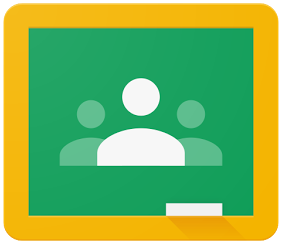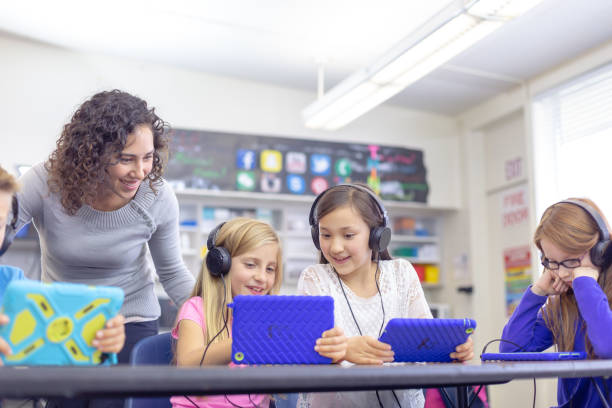The use of technology in classrooms has grown significantly, presenting teacher with powerful tools to enhance learning and signify their work. As the role of technology in education continues to grow, the teacher needs to adapt to using and incorporating this into their curriculum and lesson planning. By embracing technology, teachers can provide more student engagement, accommodation for students’ learning needs, and help students succeed outside the classroom by preparing students for the future.
To depict how technology can help, consider this situation involving Mr. Evan. He is a first-year teacher of science and has a 6th-grade class. He is passionate about teaching but believes he can manage his class on paper, and stays away from the tech resources within his classroom. Meanwhile, his colleagues have found tech helps education in great part by organizing content. His peers see it as a great opportunity to track students’ progress and foster students’ learning. Mr. Evan struggles with classroom management and structuring class activities. Being a first-year teacher, he feels like he doesn’t need help and is struggling with evaluating student tracking. During an observation, his department chair of science and vice principal monitored Mr. Evan and gave him a long list of feedback that highlighted areas of improvement, such as progress tracking, classroom organization, and management. Mr. Evan is worried and doesn’t want to be placed on a performance action plan.
Following the suggestion, Mr. Evan reaches out to his colleagues for advice. They suggested going to the instruction specialist for help. Mr. Evan reached out to the instruction specialist and the technology specialist to aid in his improvement in class. With their support, Mr. Evan began to see technology not as a burden but as a valuable asset, enhancing his classroom and students’ learning. While Mr. Evan may not have loved the experience of building his own skills, he quickly learned his time was well invested. When he integrated technology changes in the classroom, the students also began to make changes to improve themselves. Mr. Evan learned about many subtle benefits of technology in the classroom.

Technology Aids Engagement
The benefit of classroom technology is that it is an at risk-student learning tool. The school system defines these groups of students as “Failing grades, low GPAs, and high absenteeism.” Research shows that technology can have an important impact on these students by offering personalized learning experiences and providing them with tools for developing complex thinking skills and using real-world applications. With technology, teachers introduce tools and resources to the students to aid in engagement in complex thought, problem-solving, tracking students’ grades, GPA management, and attendance. The students using technology can start to gain more in their learning and show improvement. 1 2
It doesn’t just help these groups of students; it also creates a student-centered classroom to increase critical thinking, collaboration on projects, and finding different solutions to problems. With moving the technology to the classroom for students can cause difficulty for teachers. Teachers have had some challenges with moving the curriculum to adapt it to technology. Learning management platforms like Google Classroom, Microsoft, Canvas, and Classroom Dojo allow students to collaborate on projects and share ideas and thoughts. This aids in collaborative work but provides a supporting atmosphere that encourages students to make mistakes and take risks, just like the teacher is doing while learning the software tools. Once the teacher learns the preferred platform often selected by the school’s technology department, the student can begin to engage with technology, too. The results can be almost immediate. 3

Technology Creates a Smart Learning Environment
Education Technology creates a “smart learning classroom atmosphere” that makes learning more accessible and increases collaboration with students. By implementing technology, students can easily access materials, work together, and receive feedback from teachers. One example Mr. Evan now finds helpful allows students to submit an assignment online, where he can review and give feedback on a draft, and track progress for the his records. This provides immediate interaction for the student to be on track and allows students to have an active role in their learning. A significant advantage of using technology can differentiate instruction. Digital tools and instruction allows teachers to adjust assignments based on each student’s ability and learning pace. By using technology, teachers can change and customize lessons to meet each student with their individual needs providing support in certain areas. 4
Classroom Technology Prepares Students for the Future
Integrating technology into the classroom not only keeps students engaged but helps students learn valuable life lessons. One example of transferrable skills gained through the use of technology in the classroom is digital literary skills, such as the use of the Google Suite or Microsoft Office, which prepare students for work in professional settings. These programs like spreadsheets and word processing tools help them gain confidence, as well as teach them to use it effectively. When the classroom teachers incorporate these tools into classroom activities a teacher can help students become comfortable, helping them use them efficiently, and prepare those students for additional academic work or employment. Additionally, teachers can introduce concepts such as online research, which contributes to increasing importance in higher education and the workspace.5

Integrating technology in a classroom setting offers many benefits for teachers and students. Teachers like Mr. Evan, who feels hesitant to use technology, can find support from colleagues and school specialists and make an easy transition. Technology can help enhance classroom management and engagement, tailor students’ learning, and help with learning new skills. By adapting technology with advancements, teachers can create a more inclusive atmosphere for helping our students.
- Rozalind G Muir-Herzig, “Technology and Its Impact in the Classroom,” Computers & Education 42, no. 2 (February 1, 2004): 111–31 ↵
- Mohammad Farısı, “DEVELOPING THE 21ST-CENTURY SOCIAL STUDIES SKILLS THROUGH TECHNOLOGY INTEGRATION,” Turkish Online Journal of Distance Education 17, no. 1 (January 11, 2016): 16–30, https://doi.org/10.17718/tojde.47374. ↵
- Adolph Delgado et al., “Educational Technology: A Review of the Integration, Resources, and Effectiveness of Technology in K-12 Classrooms,” Journal of Information Technology Education: Research 14 (January 1, 2015): 397–416, https://doi.org/10.28945/2298. ↵
- Mohammad Farısı, “DEVELOPING THE 21ST-CENTURY SOCIAL STUDIES SKILLS THROUGH TECHNOLOGY INTEGRATION,” Turkish Online Journal of Distance Education 17, no. 1 (January 11, 2016): 16–30, https://doi.org/10.17718/tojde.47374. ↵
- Mohammad Farısı, “DEVELOPING THE 21ST-CENTURY SOCIAL STUDIES SKILLS THROUGH TECHNOLOGY INTEGRATION,” Turkish Online Journal of Distance Education 17, no. 1 (January 11, 2016): 16–30, https://doi.org/10.17718/tojde.47374. ↵



2 comments
Zoe Klupenger
Hi D’vaughn! This infographic about educational tools was really informative! Having knowledge about what tools can help kids and their education is extremely important for parents and other people and you portrayed that really well! I think the visuals you included also played a big part. Nice! Are there any counter-arguments you found when researching you did not include in your infographic?
Theresa Muller
Your article was very insightful! The example with Mr. Evan reminded me of one of the episodes in Abbot Elementary where the instructor felt left behind when technology was introduced but was able to overcome this setback when she admitted her lack of knowledge and opened up to learning from others. Technology can be daunting, but also, as you demonstrated, a wonderful tool that can enhance learning for students.